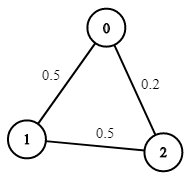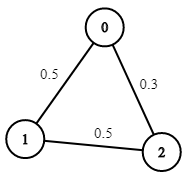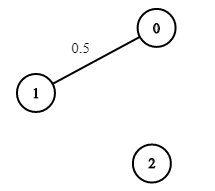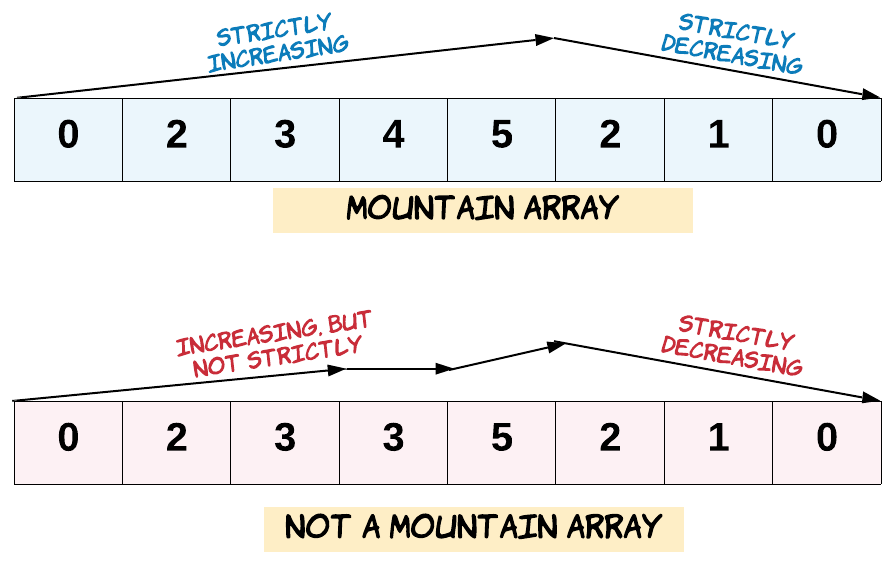2020-12-10 Daily-Challenge
Today I have done Path with Maximum Probability on leetcode and leetcode's December LeetCoding Challenge with cpp.
Path with Maximum Probability
Description
You are given an undirected weighted graph of n nodes (0-indexed), represented by an edge list where edges[i] = [a, b] is an undirected edge connecting the nodes a and b with a probability of success of traversing that edge succProb[i].
Given two nodes start and end, find the path with the maximum probability of success to go from start to end and return its success probability.
If there is no path from start to end, return 0. Your answer will be accepted if it differs from the correct answer by at most 1e-5.
Example 1:

Input: n = 3, edges = [[0,1],[1,2],[0,2]], succProb = [0.5,0.5,0.2], start = 0, end = 2
Output: 0.25000
Explanation: There are two paths from start to end, one having a probability of success = 0.2 and the other has 0.5 * 0.5 = 0.25.
Example 2:

Input: n = 3, edges = [[0,1],[1,2],[0,2]], succProb = [0.5,0.5,0.3], start = 0, end = 2
Output: 0.30000
Example 3:

Input: n = 3, edges = [[0,1]], succProb = [0.5], start = 0, end = 2
Output: 0.00000
Explanation: There is no path between 0 and 2.
Constraints:
2 <= n <= 10^40 <= start, end < nstart != end0 <= a, b < na != b0 <= succProb.length == edges.length <= 2*10^40 <= succProb[i] <= 1- There is at most one edge between every two nodes.
Solution
shortest path, using dijkstra algorithm.
class Solution {
public:
double maxProbability(int n, vector<vector<int>>& edges, vector<double>& succProb, int start, int end) {
vector<vector<pair<int, double>>> neighbors(n);
int len = edges.size();
for(int i = 0; i < len; ++i) {
neighbors[edges[i][0]].push_back(make_pair(edges[i][1], succProb[i]));
neighbors[edges[i][1]].push_back(make_pair(edges[i][0], succProb[i]));
}
priority_queue<pair<double, int>> q;
q.push(make_pair(1, start));
vector<bool> visited(n);
while(q.size()) {
auto [prob, cur] = q.top();
if(cur == end) return prob;
visited[cur] = true;
q.pop();
for(auto [nxt, nxtProb] : neighbors[cur]) {
if(!visited[nxt]) {
q.push(make_pair(nxtProb*prob, nxt));
}
}
}
return 0;
}
};
December LeetCoding Challenge 10
Description
Valid Mountain Array
Given an array of integers arr, return true if and only if it is a valid mountain array.
Recall that arr is a mountain array if and only if:
-
arr.length >= 3 -
There exists some
iwith
0 < i < arr.length - 1such that:
arr[0] < arr[1] < ... < arr[i - 1] < A[i]arr[i] > arr[i + 1] > ... > arr[arr.length - 1]

Example 1:
Input: arr = [2,1]
Output: false
Example 2:
Input: arr = [3,5,5]
Output: false
Example 3:
Input: arr = [0,3,2,1]
Output: true
Constraints:
1 <= arr.length <= 1040 <= arr[i] <= 104
Solution
nothing to say
class Solution {
public:
bool validMountainArray(vector<int>& arr) {
int len = arr.size();
if(len < 3) return false;
int pos = 1;
while(pos < len && arr[pos] > arr[pos-1]) pos += 1;
if(pos == len || pos == 1) return false;
while(pos < len && arr[pos] < arr[pos-1]) pos += 1;
return pos == len;
}
};